




An Introduction to Nerve Signals
The nervous system in our body is made up of the brain, the spinal cord, and a vast network of nerves distributed throughout the entire body.
A neuron is a base or fundamental unit of the nervous system. It is a cell that transmits nerve signals. A neuron is also known as a ‘nerve cell’.
A nerve, on the other hand, is a bundle of fibres that carry the nerve signal from the central nervous system to the targeted part of the body.
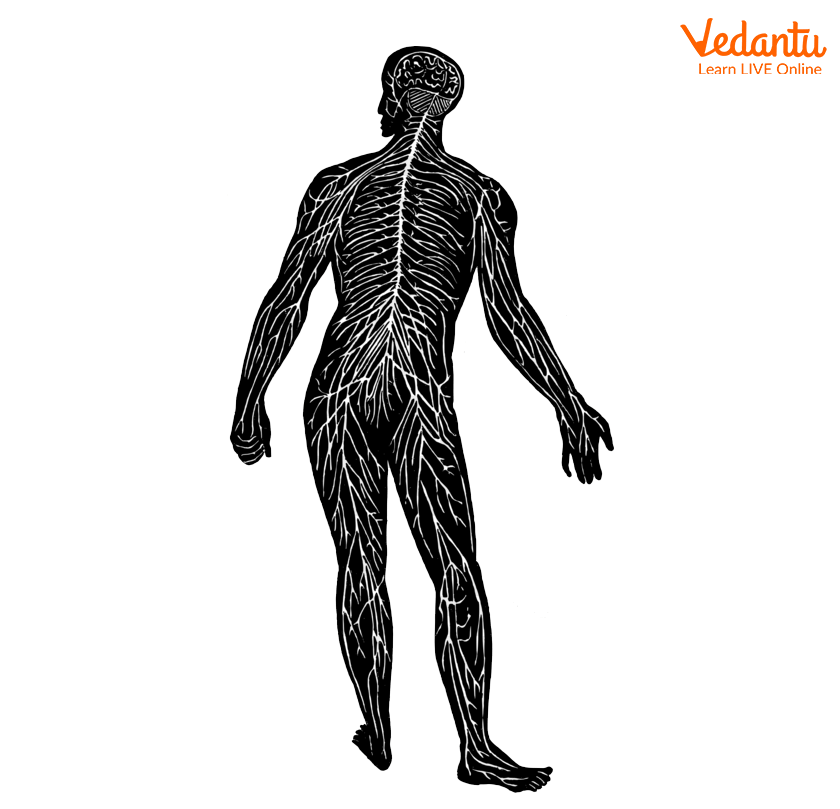
Nerves in the Body
For example, if you touch a hot object with your hand, then that information is sent to your brain, which registers and understands the action, and the nerve signals travel back from the brain to your hand, causing you to draw back your hand.
Shape of a Nerve Cell
Neurons or nerve cells are the structural and functional unit of the nervous system. They send or receive messages from one part of the body to another. They are spread throughout the body and irregular in shape. They are of different sizes and shapes depending on their location and function.
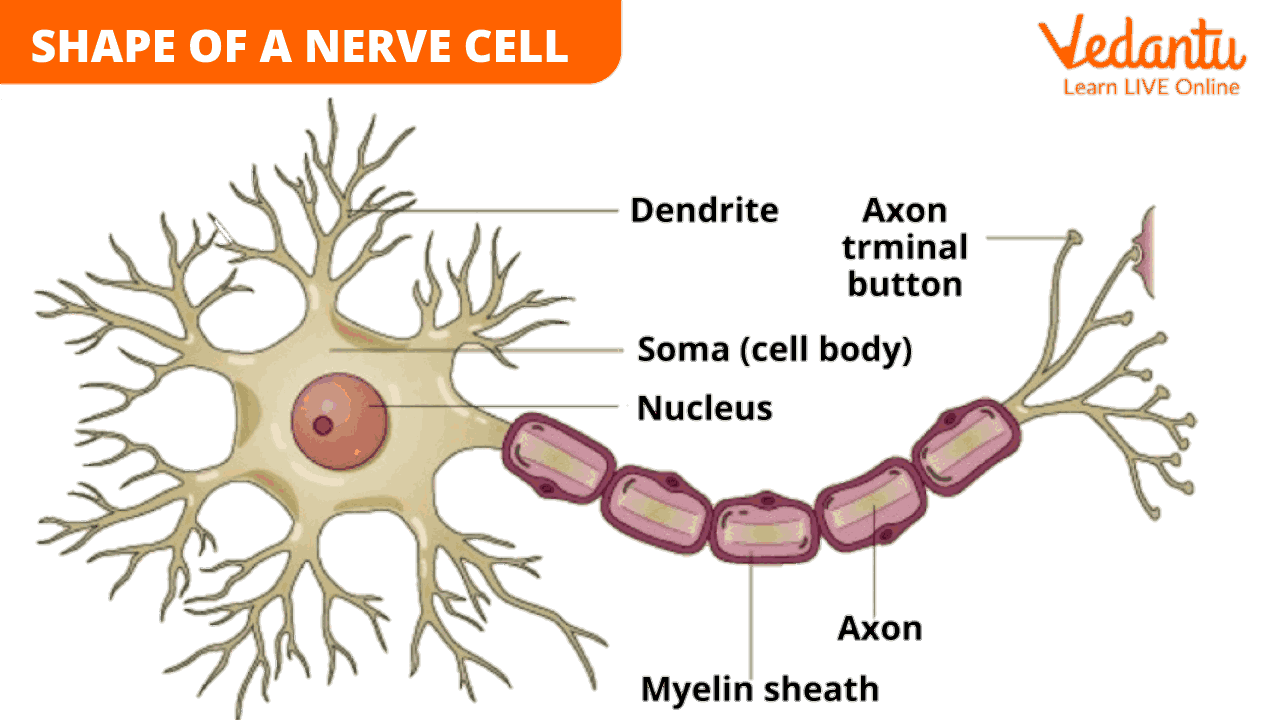
Structure of a Neuron
Parts of a Neuron
Dendrite - They are branch-like extensions of a nerve cell that receive messages from other nerve cells and further transmit them to the cell body.
Cell Body - The part of a nerve cell that contains the nucleus and other parts is called the cell body.
Synapse - It is the junction between the terminal of one neuron and the dendrites of another. Quite literally, it is a point between the ending of one neuron and the beginning of another.
Difference Between Neuron and Nerve
Central Nervous System
The central nervous system(CNS) consists of the brain and spinal cord. It is the central processing unit of the body. The main functions of the CNS are-
To collect sensory input from the body and the surroundings
To register and process the sensory information
To respond appropriately to the action
Brain
The brain is an organ that is the centre of the nervous system in a human. It is located in the head and it is the largest and most complex organ of the body. It works like a computer that stores, sends, receives, and processes all the information from our body and the environment. Three parts of the brain-
Forebrain - The frontal part of the brain
Midbrain - The central but smaller part of the brain
Hindbrain - The central region of the brain
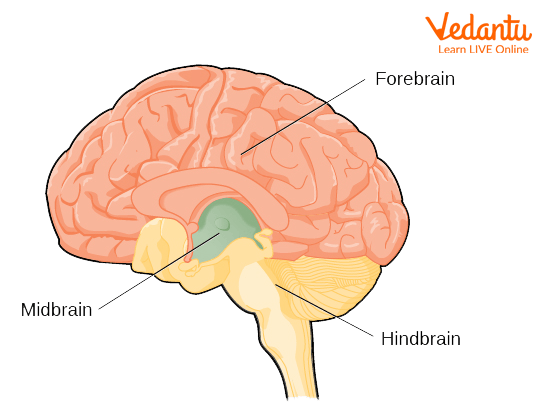
Parts of the Brain
Spinal Cord
The spinal cord extends downwards from below the brain. It consists of nerve fibres and a group of nerves that carry messages from the brain to the rest of your body.
The spinal cord is responsible for reflex actions (response to any action or occurrence around us) and the conduction of nerve signals to and from the brain.
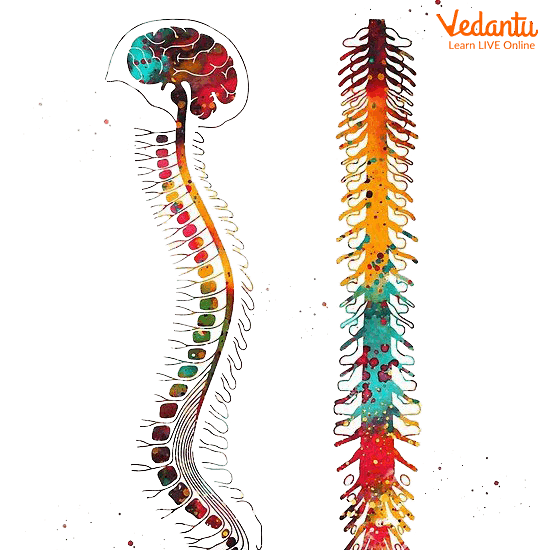
Spinal Cord
Transmission of Nerve Signals
Let’s understand how a nerve signal passes through the synapse.
A nerve signal passes from one neuron to the other through the synapse. A synapse is a junction between the ending of one neuron and the beginning of another.
When an outside action occurs, the nerve signal from that part of the body is transmitted to the central nervous system consisting of the brain and spinal cord. The nerve signal is registered and processed in the brain after which appropriate action is sent back to the particular body part or sensory organ.
Nerve signals are like electric signals that are sent from one part to another. It first passes through the cell body after it goes to the axon, myelin sheath, and finally reaches the nerve endings after which it is transmitted to the next neuron through the synapse.
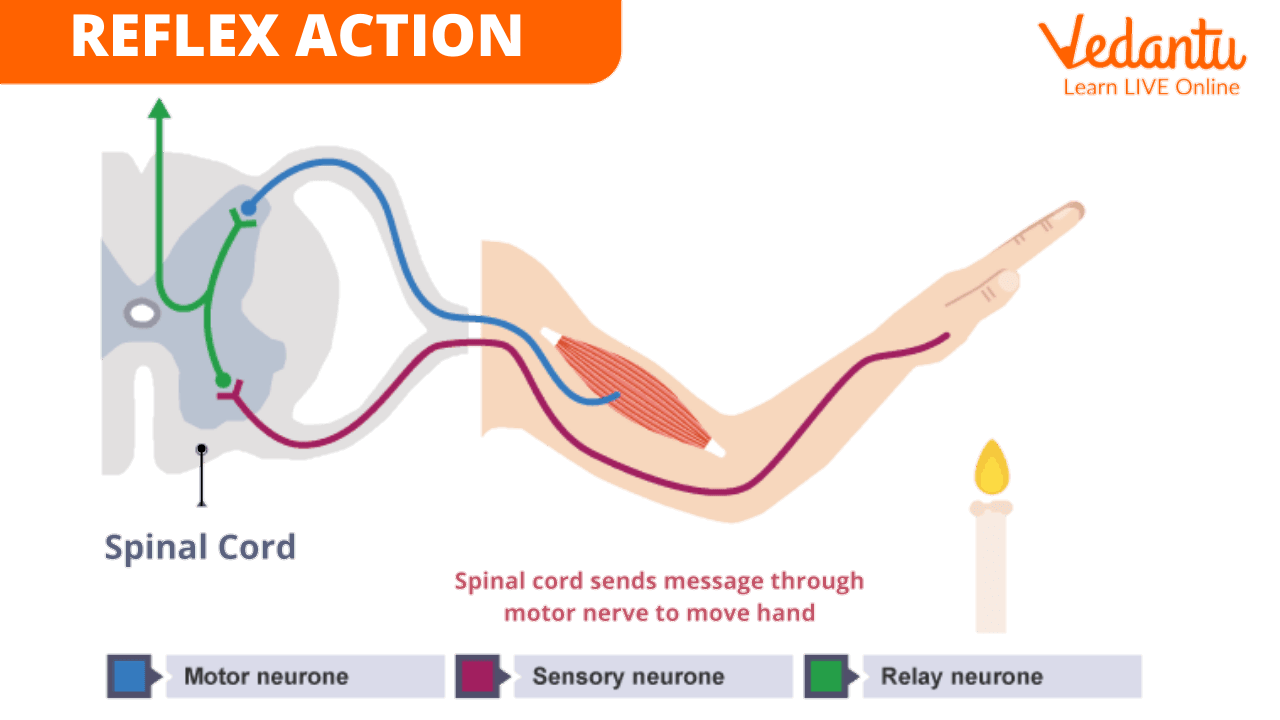
Reflex Action Movement
Conclusion
The nervous system and everything it includes is extremely important and vital for our body. It is responsible for our actions, emotions, surroundings, memory, etc. It helps to maintain control and coordination in our body. The nervous system is the control system of all our actions, thinking, and behaviour.
FAQs on How Do Nerve Signals Pass Through a Synapse?
1. How is the brain protected?
The brain is protected by a strong box-like structure called the skull.
2. What are the sense organs in our body?
Ears, eyes, nose, tongue, and skin are the five sense organs in our body. Sense organs are used to hear, see, smell, taste, and feel.
3. Reflex actions are controlled by what part of the body?
Reflex actions are controlled by the spinal cord.









